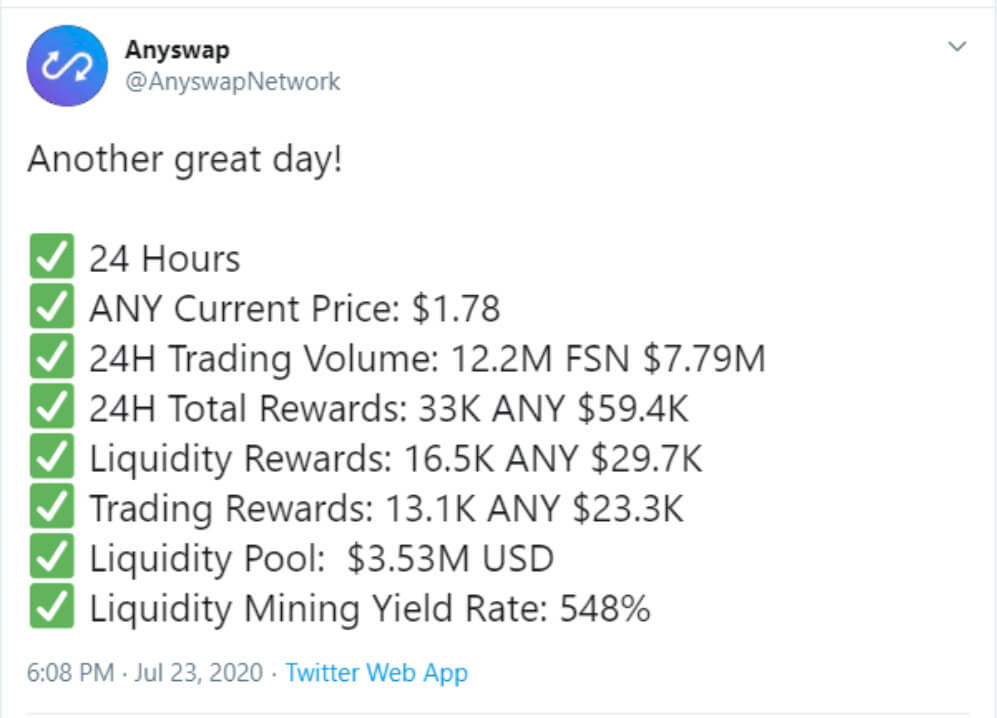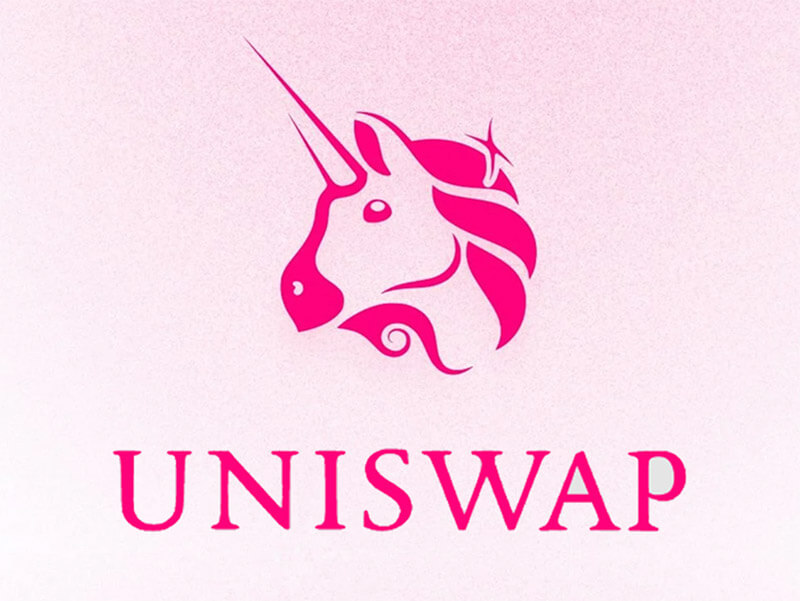Swap-protocols that are here to stay

Disclaimer: This is a sponsored press release. Readers should conduct their own research prior to taking any actions related to the content mentioned in this article. Learn more ›
The rise of DeFi sadly brought more short-term experimental projects than ones with fundamental long-term value. Developers with enough Solidity knowledge were quick to purchase Finance and food-themed domains only to convert them into copycats for a quick buck. Some of them, such as SushiSwap, managed to even become one of the leading DeFi projects for a short time by copying protocols with a strong community like Uniswap.
While some users who joined the DeFi craze early exited as the absolute winners of this year’s bull run, most inexperienced investors became bagholders. Most platforms in the sector, specifically swap-protocols, promised extremely high returns. Meanwhile, the rest of the investors were left with the other side of the stick. The truth is that Rome was not built in a day and the same can be applied to DeFi.
Luckily, there are plenty of protocols that do not rely on cheap marketing tactics. Instead, they work hard with a strong team of experienced developers. Their goal? Deliver the best services and products for crypto users. In this article, we will mention some of the best swap-protocols and underdogs who are set to succeed in the next bull cycle.
Anyswap

Anyswap is a fresh DEX cross-chain swap protocol launched in July 2020. Based on the Fusion blockchain, the protocol delivers safe and low-cost opportunities for liquidity providers and token swappers. Built by a team of serious developers, along with an experienced Fusion developer ecosystem, Anyswap is set to become a leading DeFi protocol.
The project’s main emphasis is based on cross-chain capabilities and support, low gas fees, a quality reward distribution system, and security. With the help of Fusion, an interoperability solution for the crypto finance ecosystem, users pay some of the lowest gas fees. Liquidity providers, also called farmers, pay less than $0.0001 for token swaps and LPs. As a comparison, users on other protocols pay between $20 and $40 in gas fees due to high network congestion on Ethereum.
Moreover, the Fusion Decentralized Control Rights Management (DCRM) feature allows a fully decentralized custodian experience where the security of assets is kept to a maximum. According to the team, it is more powerful than atomic swaps and more secure than traditional sharded key storage schemes. Developed for years, it is approved by four leading cryptographers and used by an outstandingly high community of users.
The project also hosts a native governance token called ANY. With ANY, the community can vote on numerous decisions. In the spirit of decentralized finance, users have the ability to vote for future LPs and propose changes to the protocol. In a sense, the community on Anyswap has complete control over the platform.
Additionally, holders are incentivized to actively use the swap and LP protocol as they receive almost 10k extra ANY tokens per day. In September, Anyswap revealed that holders earn a 159% on non-ANY pools and 367% APY on ANY pools. When providing liquidity, LPs earn between 0.43% and 1% in ANY per day!
Performance
At the time of writing, the Anyswap protocol hosts 5 liquidity pools with three more to come. Currently, farmers can contribute to the Fusion, ANY, USDT, ETH, and UNI LPs. The team announced that it would launch Bitcoin, XRP, and Litecoin pools in the future.
Since its launch on July 22, with no presale or fundraise, Anyswap reached a sizeable amount of liquidity. Only a day after launch, investors contributed to $7.79 million in daily trading volume and a liquidity pool of $3.53 million. Moreover, the reward distribution averaged at around a 548% yield rate.
In September, users earn significantly high rewards despite a recent correction in the decentralized finance market. Users who provide FSN liquidity through the USDT pool earn an APY of 159%. Those that provide liquidity to FSN-ETH and FSN-ANY pools earn 367% and 188% APY respectively. The metrics show that despite the price circulation and instability of the overall cryptocurrency market, LPs can expect stable and positive returns.

The protocol also recently integrated the Binance Smart Chain system, resulting in only $0.02 in fees for token swaps on the BSC network. With the help of DCRM, users can swap BEP-20 tokens available on Binance’s blockchain network. Anyswap is the first DEX to support the network. Moreover, the team plans to provide a similar integration for the Ethereum blockchain.
While the Anyswap protocol is not highly popular at the time, we expect it to soon become one of the leading projects in the DeFi sector. With an ever changing landscape supported by innovative technologies, it is only a matter of time before more efficient projects replace the old guard of DeFi.
Uniswap

Famous as the ‘King of DeFi,’ Uniswap is a token swapping and LP protocol with years of development behind it. The decentralized exchange launched for the first time on November 2 2018 when DeFi significantly lacked the popularity it now has. As a fully decentralized protocol, Uniswap made the next step by introducing a governance model. Similar to SushiSwap’s SUSHI, Uniswap introduced the UNI governance token in September. Distributed primarily to the community and active LPs, the token achieved great success.
Most investors were initially attracted by the platform’s Automatic Market Maker (AMM) feature. Uniswap was the first platform to introduce the concept, originally proposed by Ethereum creator Vitalik Buterin. With an AMM, users trade with other users. This offers a more decentralized experience as users traditionally interacted with an exchange’s order book. Moreover, the AMM allowed users to provide liquidity to new projects and give them a head start by supporting them through personal assets.
On September 19, the DEX protocol regained its title by reaching a new all-time high. According to data from DeFi Pulse, Uniswap now hosts $1.93 billion in collateralized assets. This makes it the number one project in the DeFi sector, surpassing projects such as Aave and Curve Finance with $600 million in value more.
However, not everything is great at Uniswap. The main downside to the DeFi protocol is that Uniswap primarily relies on the Ethereum network. Essentially, if the Ethereum network is clogged or deals with high fees, users on Uniswap take the toll. Moreover, liquidity providers deal with extreme slippage rates and risk of impermanent loss during times of high volatility.
Furthermore, all fees on the protocol are equal for all users. This makes it hard for new LPs to participate as it becomes too costly to provide liquidity. Additionally, this provides an upper hand for whale manipulation as they can make more transactions and swaps without being afflicted by fees. While there is an experienced team of developers behind Uniswap, the protocol might not progress further until it introduces a solution for Ethereum’s network congestion.
Balancer

Launched in March of 2020 and audited by Trail of Bits, Balancer is one of the more successful protocols in DeFi. Balancer is one of the first to introduce a native governance token which would additionally be provided to liquidity providers. The platform also introduced a new feature never seen before on LP protocols, users could pick between private and shared pools.
In private pools, the owner is the only individual who can add liquidity to the pool. In return, all of the parameters within the LP can be easily changed. For example, the owner of a private pool can edit swap fees, add or remove tokens, change token weights, and even pause trades.
On the other hand, shared pools are the same as ordinary liquidity pools. Anyone can join and provide liquidity in a shared pool and receive Balancer Pool tokens in return. However, the difference is that the parameters behind the LP cannot be changed. Even the creator of the pool cannot make any changes after creating the pool.
Additionally, farmers can also utilize a third special kind of liquidity pool, a smart pool. Smart pools represent a version of private pools in which smart contracts act as the controller. The option offers a more decentralized combination of private and shared pools where smart pools accept liquidity from all users. However, all users have to agree and reach a consensus to change the parameters of the LP.
Balancer initially had more liquidity and activity compared to its current situation. Now, Balancer ranks ninth on the DeFi Pulse leaderboard with only $562 million in locked assets. The team behind Balancer works hard on bringing new novelties and updates. However, more speculative-focused protocols have taken the lion’s share of DeFi. SImilarly to Uniswap, we expect higher interest in Balancer if it introduces a feature that would decrease fees.
Cream Finance

Cream Finance is a fork based on Compound Finance that introduces decentralized P2P lending for all blockchain networks. The team behind Cream Finance recently added a token swapping feature with the help of a native AMM that contributed to its existing P2P lending platform. Named creamY, it is a dynamic updatable AMM based on features from protocols such as Uniswap, Balancer, Blackholeswap, and Curve.
The first iteration of the AMM launched on September 20 and introduced concepts such as Dynamic Update, Yielding Stable Versions, Consolidated Liquidity, and Single-sided Liquidity. Through Dynamic Update, the list of supported tokens on Cream Finance is constantly updated as new projects appear. Their stable version of yielding allows users to hold a stable version of an LPs underlying asset by being able to hold or transact while providing liquidity.
Through consolidated liquidity, Cream builds upon low-slippage solutions that Curve and Blackholeswap introduced by allowing farmers to trade within the largest set of an asset rather than fragmented subsets. However, it’s most innovative feature is Single-sided Liquidity (SSL). With SSL, farmers can provide liquidity by only offering one token to a pool. Traditionally, farmers had to own two assets to provide liquidity to an LP. This made it extremely expensive as users would have to own equal amounts of both assets to reduce risks. Additionally, creamY essentially minimized the effects of impermanent loss as farmers only risk one asset losing or gaining too much value.
While the new creamY AMM brings a new set of innovative features, it is still too new to offer a risk-free farming environment. The Cream Finance team warned users that it has not yet employed blockchain auditing companies to review creamY’s code.
Only a handful of credible developers have personally reviewed the AMM, with no official auditing process. To attract more liquidity to its platform, Cream Finance would need to severely test its new AMM. Before swappers and farmers migrate, security should be the top priority.
Conclusion
The DeFi sector is a competitive environment where innovations and new features appear every single day. On that account, it is important to differentiate between swap-protocols that are here to stay and those that are too experimental to be viable long-term. As we already explained, a handful of food and finance-themed DeFi protocols experienced success overnight. However, the problem is that success requires constant work for a product or service to be efficient.
In this article, we briefly touched upon a number of swap-protocols that demonstrated their worth in the past few months. All of them bring different features to the table that make them more efficient than other solutions. For example, we concluded that Anyswap is the only DEX protocol to provide low fees for token swappers and farmers. Meanwhile, no other project made the initiative to improve upon Ethereum’s shortcomings.
On the other hand, protocols such as Balancer and Cream Finance focused on features that would improve swapping and LPs. As we previously explained, Balancer is one of the few protocols to offer private and shared LPs. Moreover, they offer a special type of LP where all functions are controlled by a smart contract.
Cream Finance for instance attempts to improve the quality of modern AMMs by combining features seen in other protocols. With the creamY AMM, users have a dynamic experience where LPs are made more efficient by reducing fragmentation.
While Uniswap did not bring any notable changes to its protocol lately, the team did bring a new native token economy through UNI. The new governance token will finally bring a complete decentralized experience. The well-established Uniswap community will now be able to propose changes and vote for new LPs.
In the end, it is clear that there is no definite winner when it comes to DeFi. All protocols have their shortcomings and advantages with no solution that is 100% efficient. Nevertheless, we expect the situation to change as developers continue with their hard work. New innovations that will make aspects such as fees, slippage, and impermanent loss might soon be a thing of the past.
































































































